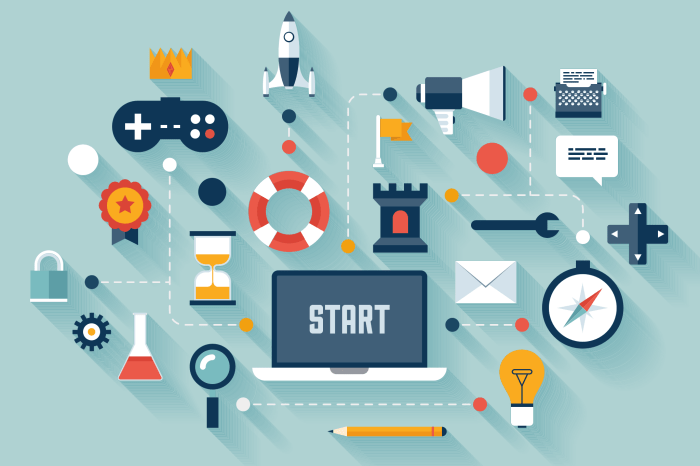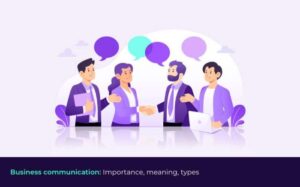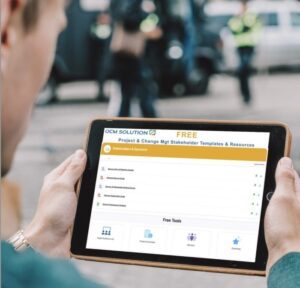
Gamification in sales training opens up a world of exciting possibilities, blending learning with playful competition to create memorable experiences. As businesses strive to equip their teams with effective selling skills, gamified training has emerged as a powerful tool, transforming traditional methods into engaging, interactive journeys.
This innovative approach not only enhances learning but also boosts motivation through rewards and friendly rivalry. Companies across various industries are successfully integrating gamification into their training programs, demonstrating its effectiveness in developing top-notch sales professionals.
Introduction to Gamification in Sales Training
Gamification is a technique that incorporates game-like elements into non-game contexts, such as sales training, to enhance engagement and learning outcomes. Its relevance in sales training lies in its ability to motivate learners, making the process more enjoyable and effective. By transforming mundane training sessions into interactive experiences, gamification helps sales professionals sharpen their skills and retain knowledge better.The benefits of gamification in sales training are manifold.
Firstly, it increases learner engagement by introducing challenges and rewards. Secondly, it caters to diverse learning styles, allowing participants to enjoy a personalized experience. Thirdly, it fosters healthy competition, driving individuals to outperform their peers while also creating opportunities for collaboration. Successful implementations can be seen in companies like Salesforce and HubSpot, where gamified training modules have led to significant improvements in sales performance and employee satisfaction.
Key Elements of Gamification in Sales Training
To maximize the effectiveness of gamification in sales training, several key elements must be considered. These components include:
- Clear Objectives: Setting specific, measurable goals helps participants understand what they need to achieve and how progress is tracked.
- Engaging Content: The training material should be interactive and relevant, incorporating various media like videos, quizzes, and scenarios.
- Feedback Mechanisms: Continuous feedback enables learners to adjust their strategies and improve their performance in real-time.
Reward systems play a crucial role in motivating sales professionals. By providing incentives such as points, badges, or leaderboards, teams are encouraged to strive for excellence. Competition and collaboration also enhance the learning environment, as individuals can share knowledge and strategies while competing to reach their targets.
Business Innovation through Gamification
Gamification fosters innovation in sales training by encouraging creative problem-solving and teamwork. By integrating game elements, companies can stimulate out-of-the-box thinking and adapt to new market demands. For instance, organizations like Zappos have embraced gamified training methods to empower their employees, leading to innovative approaches in customer service and sales strategies.Successful case studies highlight how businesses can innovate through gamified training.
For example, Deloitte’s Leadership Academy utilizes gamified elements to develop future leaders, resulting in increased employee engagement and retention rates. To effectively integrate gamification into existing training programs, companies should focus on aligning game mechanics with learning objectives, ensuring that the gamified experience is relevant and impactful.
International Business Perspectives on Gamification
Different cultures perceive gamification in sales training in varied ways, influenced by local values and attitudes towards competition and collaboration. In cultures that emphasize teamwork, gamified training that encourages group activities tends to be more successful. Conversely, in competitive environments, individual-focused gamification might yield better results.Global companies effectively utilizing gamification in their sales training programs include IBM and Microsoft, both of which have tailored their approaches to suit diverse international markets.
Their adaptability showcases the importance of cultural sensitivity when designing gamified training initiatives, ensuring that they resonate with local employees and foster a supportive learning environment.
Conducting Business Interviews with Gamification Techniques
Incorporating gamification into business interviews can significantly enhance engagement and the overall candidate experience. By designing a gamified approach, companies can create scenarios that mirror real-life challenges faced in sales roles. This not only captivates candidates but also allows hiring managers to assess skills in a dynamic setting.Gamification helps evaluate candidate capabilities through simulations and role-playing exercises that reflect practical sales scenarios.
These techniques provide a more accurate representation of a candidate’s potential performance in the field, resulting in better hiring decisions.
Job Search Techniques Enhanced by Gamification
Job seekers can leverage gamified methods to enhance their sales skills effectively. Platforms like LinkedIn and Glassdoor provide gamified experiences that encourage users to complete their profiles, engage with content, and network with industry professionals. These gamified interactions not only improve visibility but also foster skill development.A guide for leveraging gamification during the job search process includes engaging with skill assessment tools, participating in online workshops, and utilizing gamified quizzes to better prepare for sales interviews.
By taking advantage of these resources, job seekers can position themselves as more competent and attractive candidates in the competitive job market.
Business Management Strategies Incorporating Gamification

For managers, implementing gamification into sales training requires strategic planning and execution. Management techniques that enhance gamified training efforts include setting clear performance metrics and regularly reviewing progress. This approach helps ensure that the training aligns with overall business goals while fostering accountability among team members.Through gamification, managers can effectively monitor and improve team performance. By establishing a transparent reward system, teams are motivated to reach collective goals, enhancing collaboration and camaraderie.
Gamification aligns with business management strategies by promoting a culture of continuous improvement and engagement.
Marketing Direct and Gamification

Gamification can significantly enhance direct marketing strategies in sales. By integrating game elements like challenges and rewards into marketing campaigns, companies can increase customer engagement and loyalty. Successful gamified marketing campaigns, such as Starbucks’ loyalty program, have demonstrated how gamification can drive sales and foster customer relationships.Evaluating the effectiveness of gamification in marketing involves analyzing metrics such as customer retention rates, engagement levels, and overall sales growth.
By establishing these metrics, businesses can better understand the impact of their gamified marketing strategies and make informed adjustments for future campaigns.
Ending Remarks
In conclusion, embracing gamification in sales training can significantly elevate the learning experience and outcomes for both individuals and teams. By fostering a culture of engagement and motivation, businesses can unlock the full potential of their sales forces, leading to increased productivity and success in achieving sales goals.
Question Bank
What is gamification in sales training?
Gamification in sales training refers to the use of game-like elements to enhance learning, engagement, and performance in sales training programs.
How does gamification improve sales training outcomes?
It increases motivation, fosters healthy competition, and makes learning more enjoyable, leading to better retention and application of skills.
Can gamification be used for remote sales training?
Yes, gamification is highly adaptable and can be effectively implemented in remote sales training through digital platforms and tools.
What types of rewards are most effective in gamified training?
Effective rewards can include points, badges, leaderboards, or tangible incentives that recognize and celebrate achievements.
Are there risks associated with gamification in training?
Potential risks include overemphasis on competition, which may discourage collaboration, and the need for careful design to ensure inclusivity and fairness.




